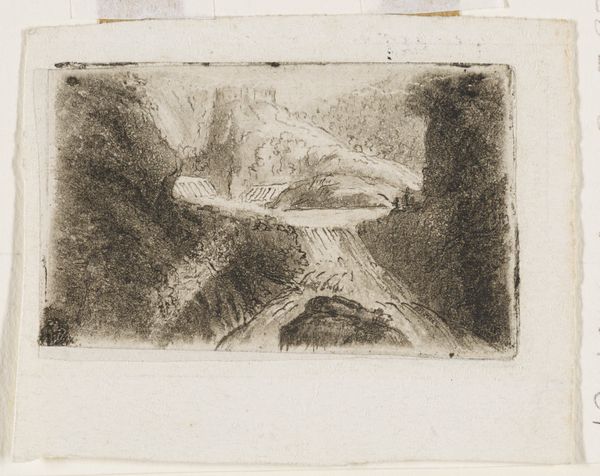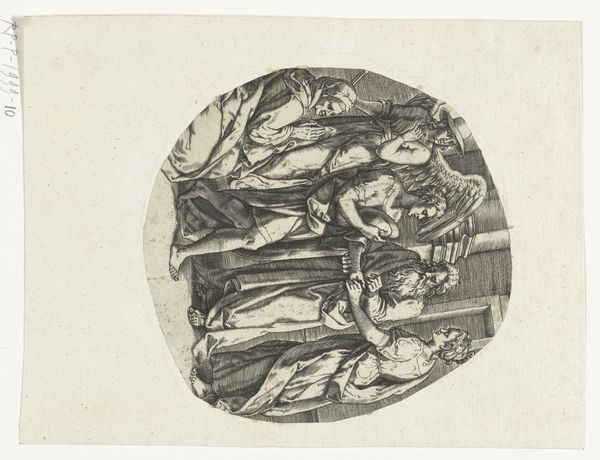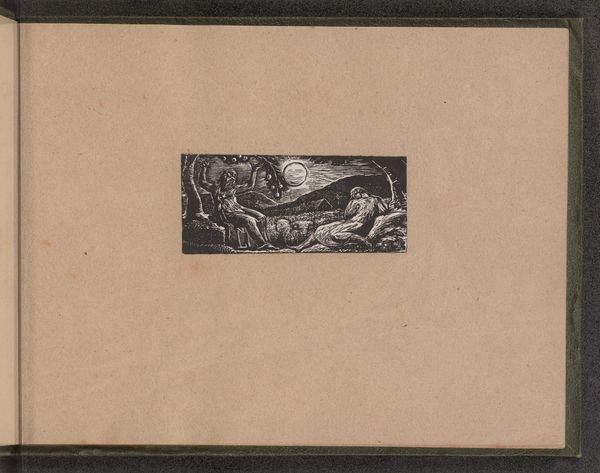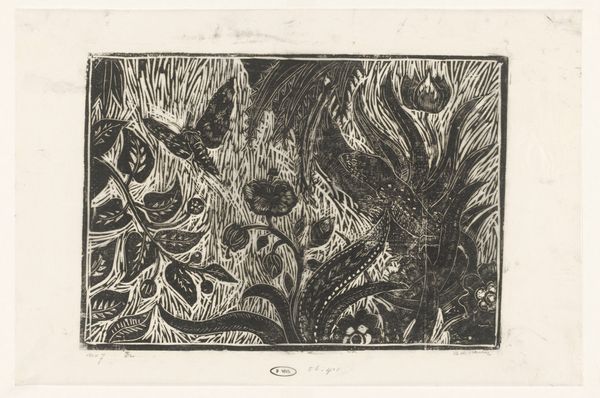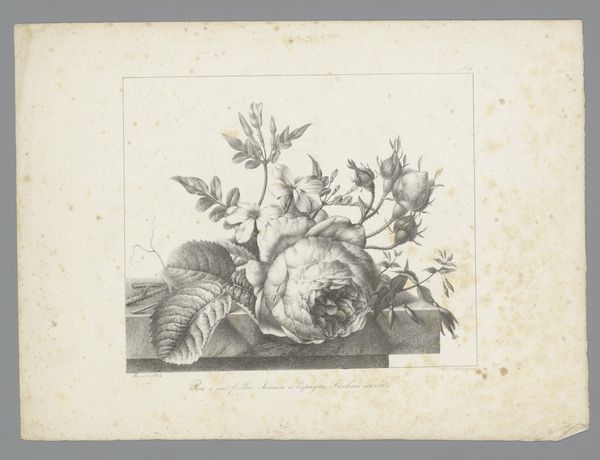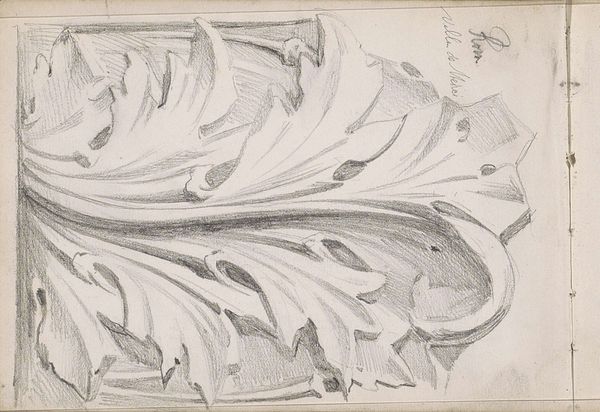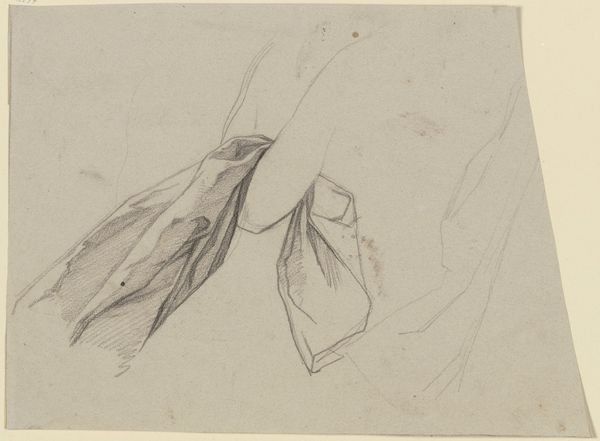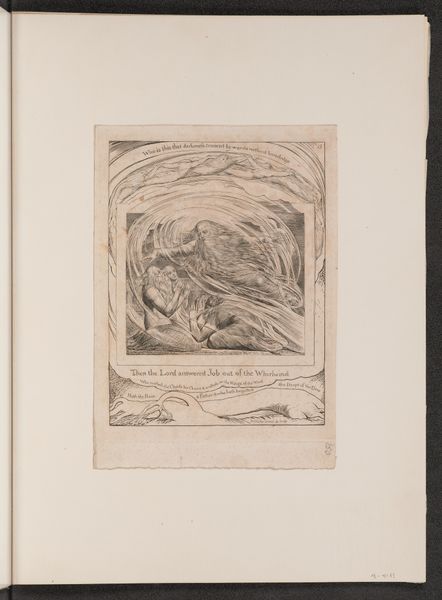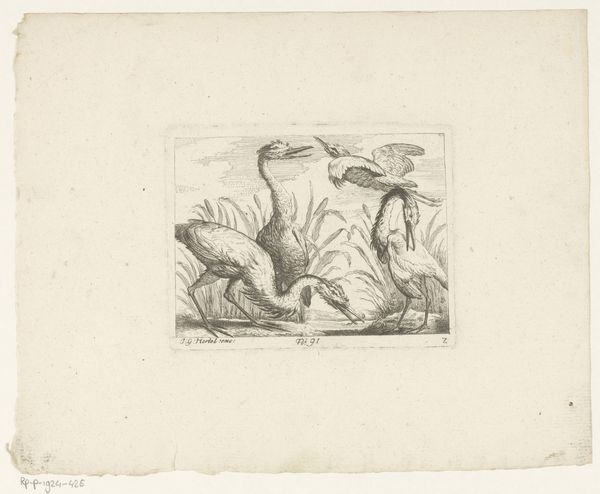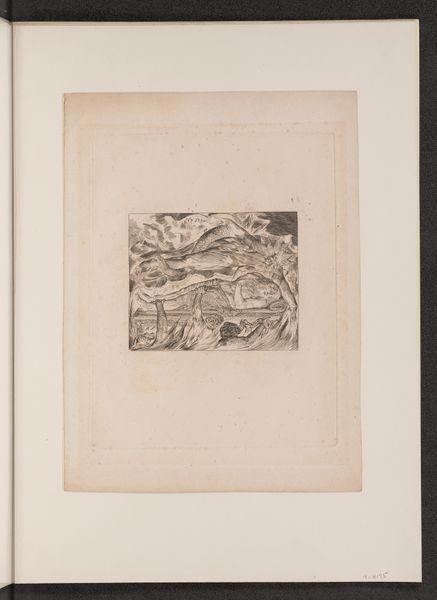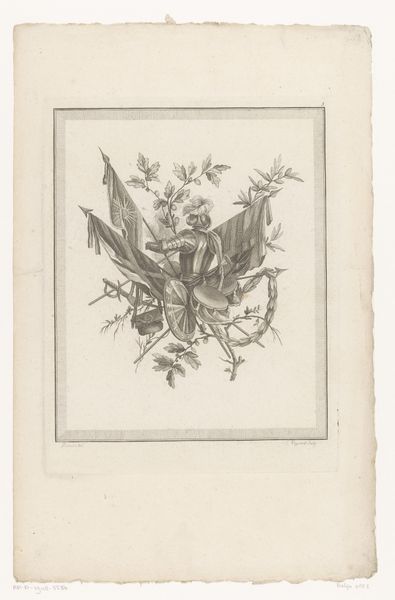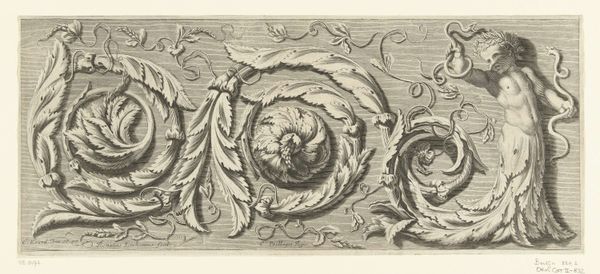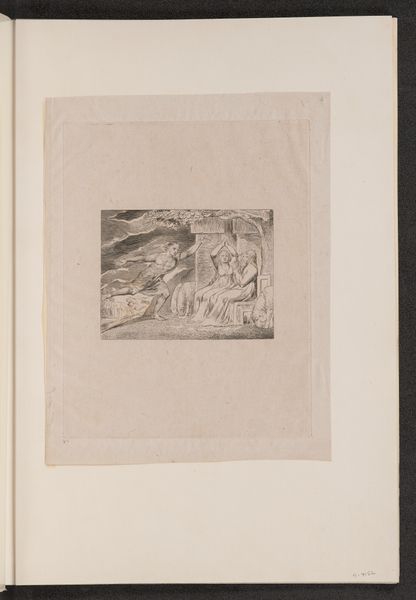
drawing, print, pencil
#
pencil drawn
#
drawing
# print
#
landscape
#
figuration
#
pencil drawing
#
pencil
#
symbolism
#
sea
Dimensions: height 412 mm, width 487 mm
Copyright: Rijks Museum: Open Domain
Curator: Richard Nicolaüs Roland Holst's "Parelduiker," created around 1918, now resides here at the Rijksmuseum. The work is a drawing and print that invites us to reflect on symbolism. Editor: It's immediately striking, this flowing figure juxtaposed against such a rigidly geometric background. The tonal range from almost pure white to very dark grey provides an emotional weight. It looks turbulent, even claustrophobic. Curator: It certainly embodies the Symbolist movement's fascination with the interiority of human existence. Holst was deeply engaged in socialist politics and spiritual searching; how might this search manifest itself in such work, made after the ravages of the First World War? The formal structure contains his anxieties. Editor: Perhaps. Note how the lines curve and intersect. There's a dynamism here, and I also wonder if the formal restraints mirror the experience of diving itself. A descent into the depths, controlled yet fraught with danger. It also evokes something dreamlike in the human mind, not exactly clear and precise. Curator: And Holst places it all within this almost otherworldly landscape that reminds one of economic anxieties related to industrialization at the turn of the century. It brings out larger questions of society's progress toward what? He contributed significantly to stained glass designs as well, with comparable symbolism. His association with socialist guilds adds nuance. It isn't merely aesthetic. It critiques prevailing societal paradigms. Editor: Interesting; so this landscape is a symbolic space for both exploration and commentary. This "Parelduiker" makes compelling use of visual form to create a sense of wonder and anxiety, inviting questions not just about human existence but also the society that frames it. Curator: Exactly. Understanding "Parelduiker" necessitates viewing it as more than a formal exercise, connecting the drawing's rich symbolism to larger cultural issues. Editor: It's rewarding to observe how Roland Holst used those precise artistic strategies in an evocative commentary on human existence, don’t you think?
Comments
No comments
Be the first to comment and join the conversation on the ultimate creative platform.
